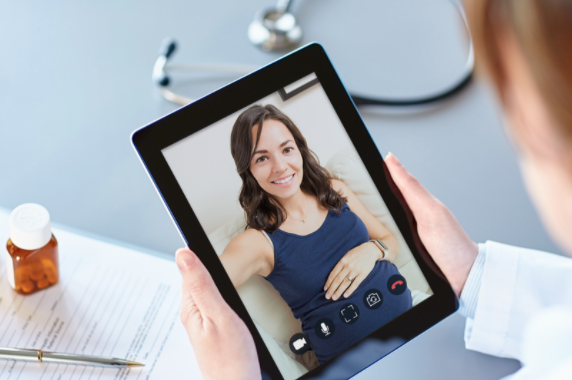
Dr. Hugh Melnick is an infertility specialist with over 30 years of experience under his belt. A longtime fixture in the field, he opened one of the first freestanding fertility clinics in New York City. But his reputation far transcends his home base in the affluent Upper East Side neighborhood; patients seek his expertise from far and wide.
To accommodate his national and even international patient base, Dr. Melnick has relied on telemedicine for years, using Skype to care for patients outside of his geographic area. But when COVID-19 dropped like a bomb on New York (and beyond), telemedicine became a critical function for his entire practice, and the team realized Skype wasn’t a scalable long-term solution.
Several solutions quickly became available for telemedicine — including common consumer-facing platforms previously barred by strict HIPAA regulations. When Skype failed to meet the pandemic’s new and unprecedented challenges, Dr. Melnick and his team also tried Zoom — “but we weren’t thrilled with it,” says Wendy Sigman, office manager at the practice.
That’s when they learned about Doctor.com’s telemedicine platform, VirtualVisit. “After some great training by our client success manager, it works seamlessly, and patients are getting used to it. VirtualVisit was the easiest route to go. How could we say no?”
Most patients were ready to embrace remote care with open arms. “About 10% of patients initially shy away from telemedicine,” Dr. Melnick estimates. However, “once they’ve had a telemedical consultation through VirtualVisit, patients realize it’s just like being there in the office with you. And it’s true! It’s just like they were here sitting across the desk from me instead of across the city or across the country — or the world.”
Wendy and Dr. Melnick cite the increased convenience and flexibility telemedicine brings to the table for its popularity with patients and physicians alike. “Now that we’ve gotten accustomed to VirtualVisit, it’s easier to see them, and we’re very comfortable with it,” Wendy says. In just three months, they transitioned around 80% of the practice to virtual care, reserving the other 20% for in-office visits, when being face to face is necessary. Dr. Melnick soon became a VirtualVisit power user: In just three months, he conducted over 365 virtual appointments — with no sign of slowing down.
New York’s future remains all but certain, as new COVID red zones emerge across the five boroughs. For now, “80% [of appointments] will probably remain virtual,” Wendy predicts. “Patients don’t want to travel. I don’t think I’m going to see a major uptick of in-person visits.”
Regardless of what happens during the fall and winter months, all signs point to telemedicine’s long-term staying power: 83% of patients indicate they’ll use telemedicine after the pandemic is under control. “Our mission is to make ourselves available to patients,” Dr. Melnick says. And, when being in the same room is geographically impossible, too risky, or generally inconvenient, “VirtualVisit is a great way to do that.”
To read more about Dr. Melnick’s journey with VirtualVisit, download the case study here. Ready to get started with telemedicine at your practice? Sign up for free.
Andrea Fjeld
Senior Content Manager
The original version of this page was published at: https://www.doctor.com/blog/reproductive-endocrinologist-choose-virtualvisit-skype-zoom
Doctor.com, a Press Ganey solution, empowers healthcare organizations to deliver better CX at every step of the patient journey. We provide the critical infrastructure and integrations necessary to... Read more
One cornerstone of running a successful practice is the digital marketing efforts put forth to attract new patients and get them to follow through with an appointment. But considering ...read more
Pandemic or not, for those who suffer from chronic pain, every day is a struggle to get certain tasks done. That’s why it’s important that pain care specialists stay fully ...read more
Third-party sources of truth are a way of life for today’s savvy consumer. Like it or not, people have more agency in how they make decisions, turning to the web to search for ...read more
It’s on everyone’s minds — the novel coronavirus, which quickly evolved from a news story to a global pandemic. Countries are closing their borders. Cities are shutting ...read more